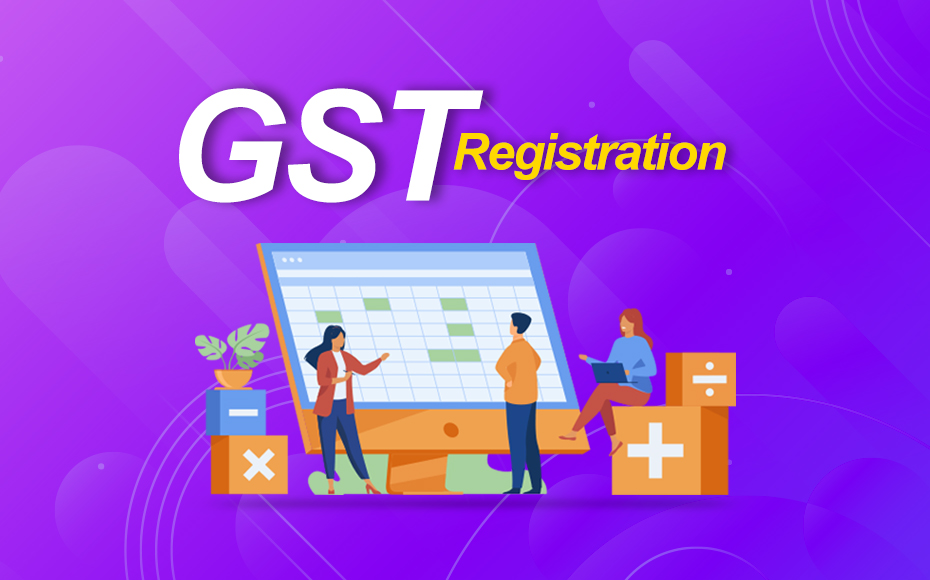Step-by-Step Refine for Singapore GST Registration Explained
The Ultimate Overview to Streamlining the GST Enrollment Process and Requirements for Small Business Owners

Understanding GST Basics
To grasp the principles of the Product and Services Tax Obligation (GST) system, local business proprietors need to first recognize its underlying principles and effects. GST is a value-added tax obligation levied on a lot of items and services for domestic usage. It aims to simplify the tax procedure by changing several indirect tax obligations imposed by the state and main federal governments. Under the GST routine, services are required to register and accumulate tax in behalf of the federal government, ensuring transparency and compliance.
One of the crucial principles of GST is input tax obligation credit scores, which allows companies to claim credit scores for taxes paid on their purchases. Comprehending these fundamental concepts is critical for tiny business proprietors to browse the intricacies of the GST system and guarantee conformity with the regulation.
Qualification Requirements for Enrollment
Having actually established a fundamental understanding of GST principles, little service owners need to now meet specific eligibility criteria to proceed with the enrollment process (Singapore GST Registration). Organizations that were registered under the previous tax obligation regimen (VAT, service tax obligation, and so on) are also mandated to register under GST. Agricultural businesses that only supply generate out of key manufacturing are excluded from GST enrollment.
Documents Needed for GST Registration

Simplified Registration Refine Steps
Adhering to the collection and confirmation of the requisite papers, the registration procedure for GST can be browsed via a series of streamlined steps linked here designed to help with effective conformity for local business owners. The very first step includes going to the GST portal and choosing the 'New Enrollment' option. Subsequently, the applicant needs to fill up in Part A of the GST REG-01 kind with information such as PAN, mobile number, and e-mail address to obtain an OTP for confirmation. As soon as the OTP is received and entered, a Temporary Recommendation Number (TRN) is generated for more procedures. The following step requires filling in Component B of the type with needed company information, submitting sustaining documents, and completing the verification procedure making use of DSC or EVC. Lastly, upon successful confirmation, an Application Referral Number (ARN) is released, indicating the conclusion of the GST enrollment process. By following these simplified actions, little service proprietors can properly sign up for GST and ensure conformity with tax obligation regulations.
Tips for Ensuring Conformity
To preserve regulative adherence and functional stability, persistent oversight find more information and aggressive actions are critical in ensuring compliance with GST demands for local business owners. Tiny organization proprietors need to remain upgraded with GST laws, filing due dates, and any changes in tax obligation rates to prevent charges and preserve a good standing with tax obligation authorities. One essential pointer for conformity is to keep accurate and detailed records of all transactions, consisting of invoices, invoices, and costs related to GST. Routinely reconciling economic records with GST returns can aid in recognizing and rectifying any type of discrepancies promptly. In addition, conducting periodic interior audits or seeking specialist support can make certain that business is following all GST rules correctly. It is likewise important for local business owners to spend in GST-compliant bookkeeping software program that can enhance the tax filing procedure and lessen errors. Lastly, participating in GST understanding workshops or training programs can improve understanding and compliance with GST guidelines, inevitably profiting business in the future.
Final Thought
In conclusion, Homepage small company proprietors must comprehend the fundamentals of GST, fulfill the qualification criteria, gather required records, and follow the streamlined registration procedure steps to make certain conformity. By streamlining the GST registration procedure and needs, small company owners can prevent charges and run their companies efficiently within the lawful structure - Singapore GST Registration. It is crucial for local business proprietors to stay certified and educated with GST guidelines to preserve a successful service procedure
Small business owners looking for GST enrollment must guarantee they gather and send the necessary papers to finish the registration procedure successfully. The files needed for GST registration typically consist of proof of organization enrollment or unification, PAN (Permanent Account Number) card of the business identification, entity and address evidence of the promoters/partners/directors, photos, address evidence of the place of organization, bank account declarations or canceled cheques, and permission types. Going to GST understanding workshops or training programs can enhance understanding and compliance with GST policies, inevitably profiting the business in the long run.
By simplifying the GST enrollment procedure and needs, tiny company proprietors can stay clear of fines and run their organizations smoothly within the lawful structure. It is crucial for little company proprietors to remain educated and compliant with GST policies to maintain a successful company procedure.